Santa Maria, CA Pollen and Allergy Report for Summer 2023
Pollen Allergy Trends in Santa Maria, CA
When is pollen lowest in Santa Maria, CA?

February
Lowest month total PPM
Avg. PPM
When is pollen highest in Santa Maria, CA?

January
Highest month total PPM
Avg. PPM
How does pollen in Santa Maria, CA compare to California?
Santa Maria has a higher average PPM than the state of California.
Santa Maria yearly avg PPM:
California yearly avg PPM:
How does pollen in Santa Maria, CA compare to the USA?
Santa Maria has a lower average PPM than the USA.
Santa Maria yearly avg PPM:
USA yearly avg PPM:
Is pollen worse this year in Santa Maria, CA?
Spring 2023 was better than spring 2022.
Spring 2023 PPM:
Spring 2022 PPM:
Average PPM in Santa Maria, CA
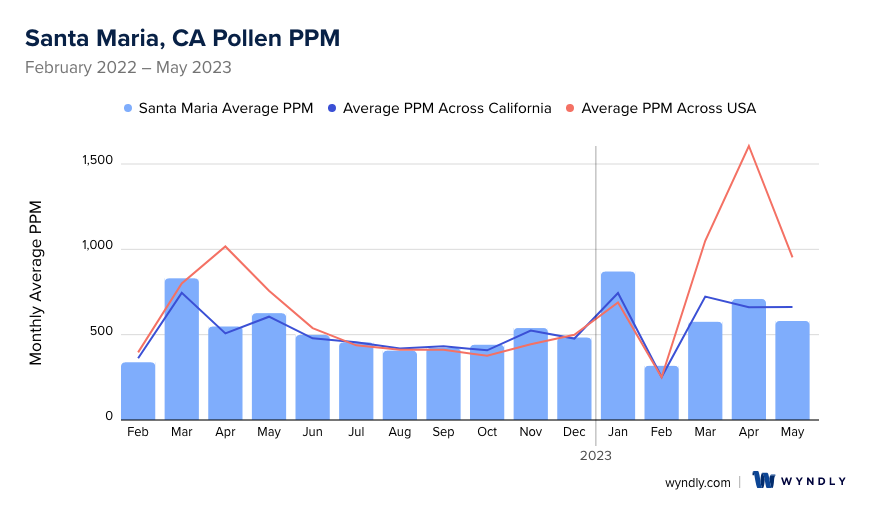
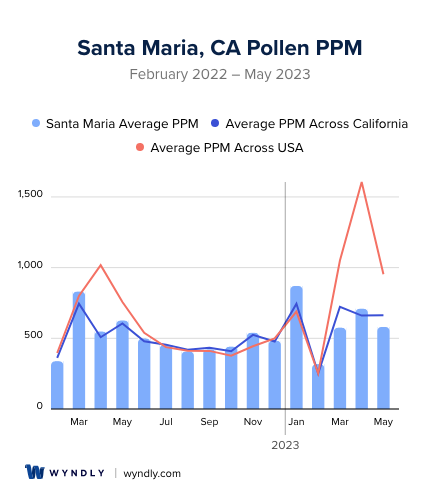
Santa Maria, CA Pollen and Allergy Breakdown by Month
Grass
When is grass pollen highest in Santa Maria, CA?
May has the highest grass pollen in Santa Maria, CA with an average PPM of
When is grass pollen lowest in Santa Maria, CA?
December has the lowest grass pollen in Santa Maria, CA with an average PPM of
Tree
When is tree pollen highest in Santa Maria, CA?
March has the highest tree pollen in Santa Maria, CA with an average PPM of
When is tree pollen lowest in Santa Maria, CA?
August has the lowest tree pollen in Santa Maria, CA with an average PPM of
Weed
When is weed pollen highest in Santa Maria, CA?
November has the highest weed pollen in Santa Maria, CA with an average PPM of
When is weed pollen lowest in Santa Maria, CA?
February has the lowest weed pollen in Santa Maria, CA with an average PPM of
Santa Maria, CA Pollen Monthly Breakdown by Pollen Type
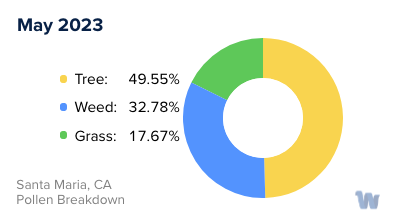
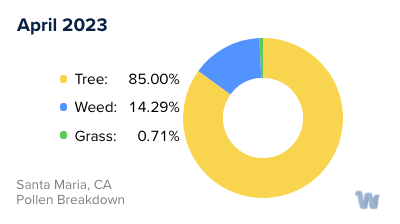
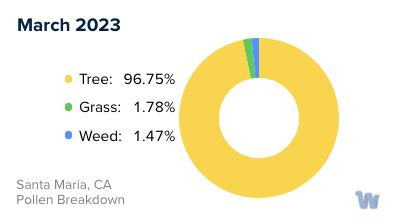
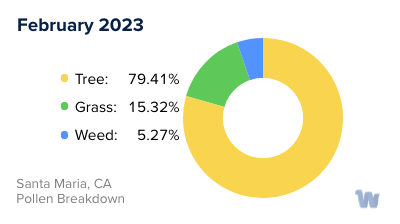
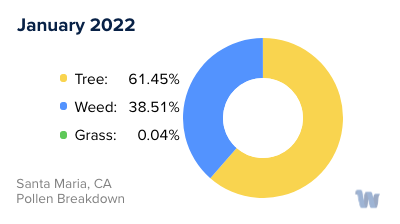
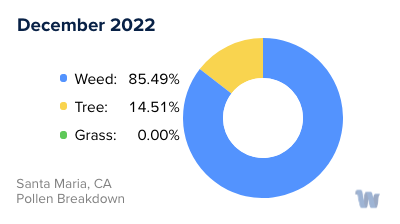
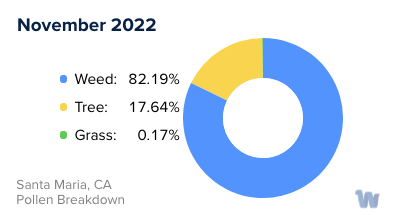
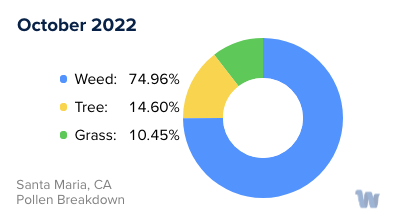
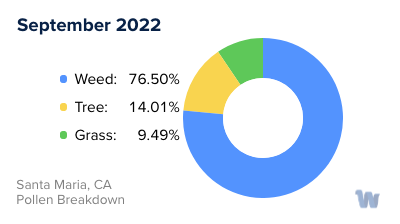
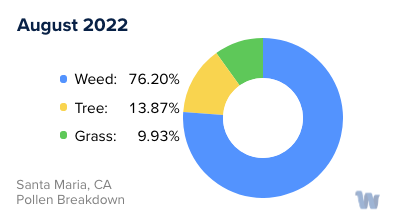
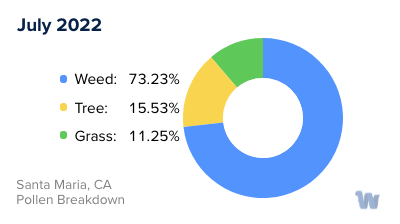
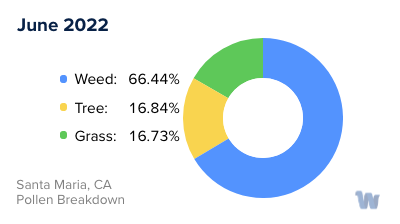
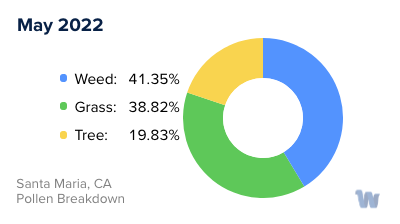
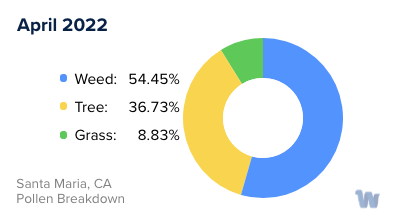
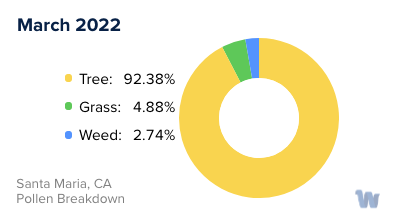
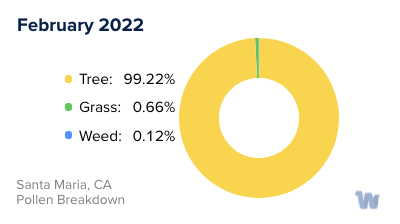
Pollen and Hay Fever in Santa Maria, CA
As the sun begins to shine in Santa Maria, California, the city comes alive with the hues of blossoming flowers, towering trees, and lush grasses. However, for some residents, this seasonal change also signals the onset of pollen allergies and hay fever, turning the beautiful landscape into a source of discomfort.
Pollen allergies, also known as hay fever or allergic rhinitis, are caused by airborne pollen grains released by various plants as part of their reproductive process. In Santa Maria, the three major types of pollen - tree, grass, and weed - contribute to these allergies.
Tree pollen tends to be most prevalent in the spring. The area is home to a variety of trees, such as oak, pine, and walnut, which produce a significant amount of pollen. Individuals sensitive to tree pollen may experience allergy symptoms during this season.
As we move into late spring and early summer, grass pollen becomes the primary concern. Bermuda grass, ryegrass, and Kentucky bluegrass are some of the common grasses in Santa Maria. They release pollen into the air, which can trigger allergic reactions in those susceptible.
Finally, as summer transitions into fall, weed pollen takes center stage. Ragweed, sagebrush, and nettle are common in Santa Maria and their pollen can cause hay fever symptoms.
The severity and timing of pollen allergies can vary from year to year, based on factors such as weather conditions and rainfall. A mild winter can lead to an early onset of the pollen season, while a rainy spring can promote rapid plant growth and subsequently, a higher amount of pollen.
In Santa Maria, understanding the types of pollen and their respective seasons can help residents anticipate and manage their pollen allergies more effectively. Despite the challenges, the city's beauty and vibrant plant life remain a joy to behold for both residents and visitors alike.

